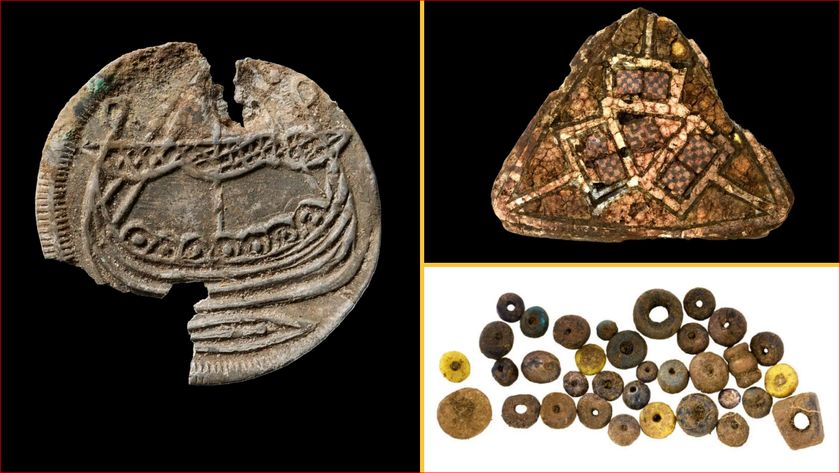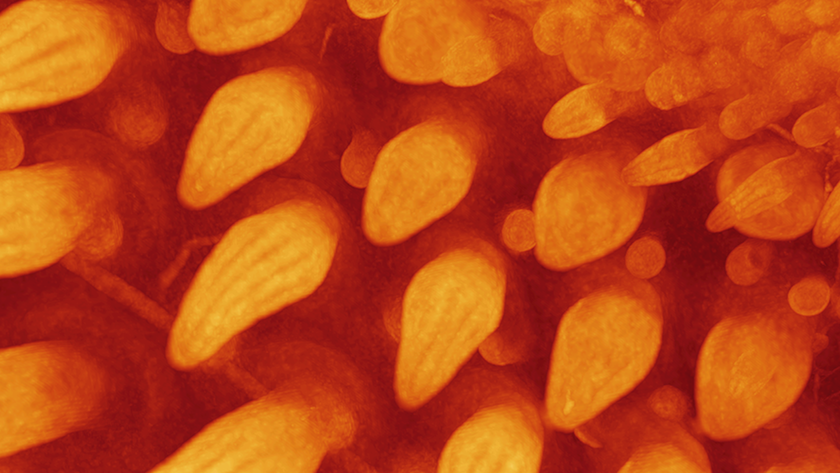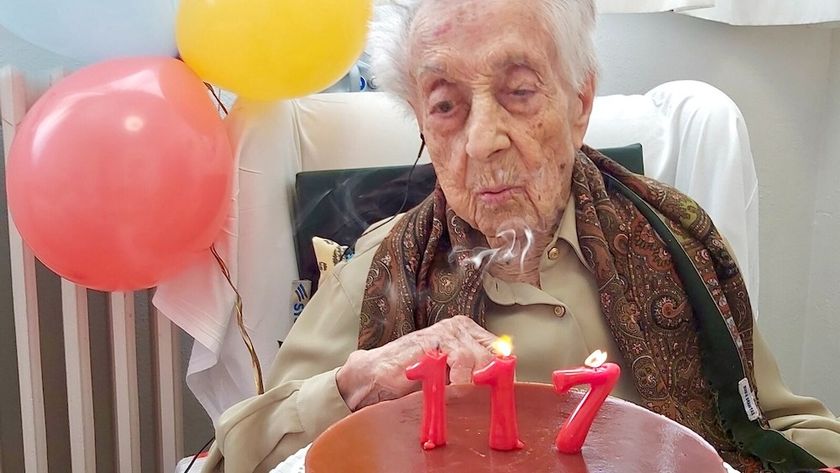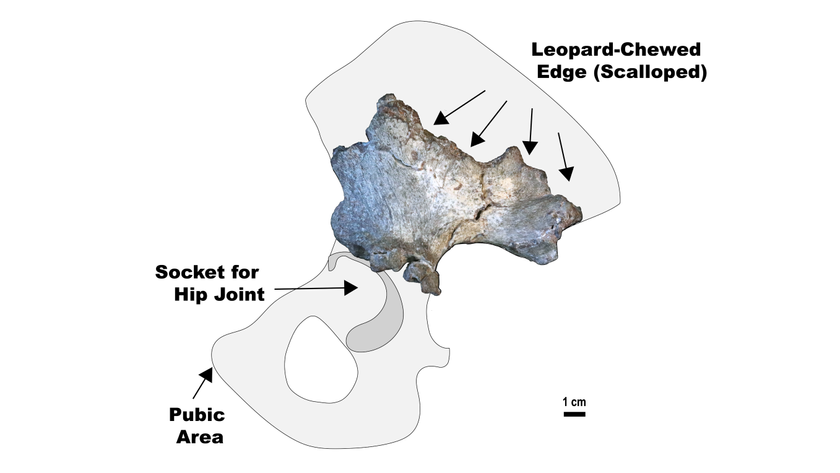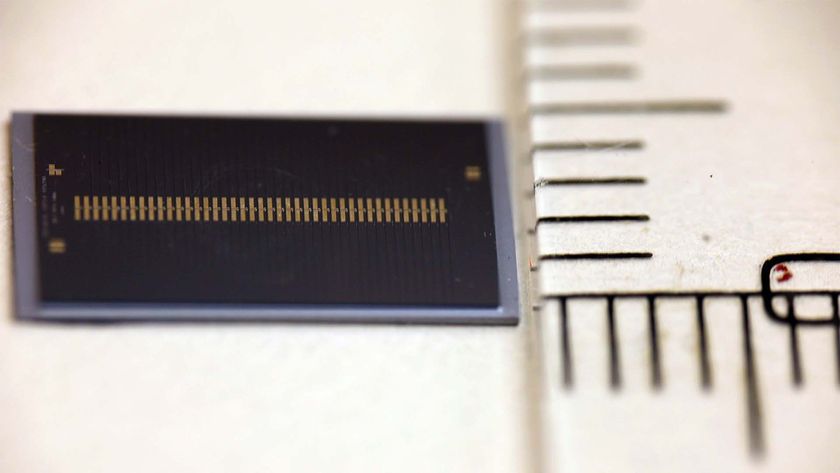Photos: 10th-century Viking tomb unearthed in Denmark
Mighty axe
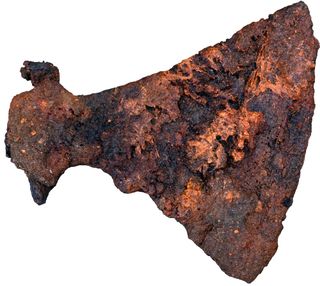
This 1,000-year-old Viking ax, among the largest ever found, was discovered by archaeologists in an unusual 10th-century tomb near Silkeborg in central Denmark. The wooden tomb was built about 950 A.D., around graves containing a Viking man and woman.
The man was buried with only this ax as a grave good, and archaeologist Kirsten Nellemann Nielsen of Silkeborg Museum thinks this was a symbol of his status as a warrior. Heavy, two-handed Dane axes like this were one of the most feared weapons of the Viking Age, Nielsen said. [Read full story about the Viking tomb]
Ancient burial
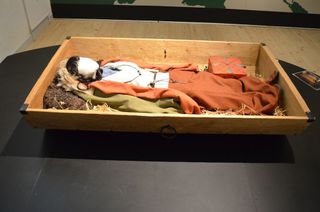
The body of the woman in the tomb was buried lying inside a wooden cart, a burial method common for important Viking women, like this reconstruction of the grave at Silkeborg Museum.
The woman wore clothes woven with gold and silver threads, and was buried with two keys. One key fit a small iron and wood casket buried beside her, and the other may have symbolized her status as a leading woman of the community. Archaeologists also found a single black hair in the woman's clothing — the only human remains in the tomb that survived the centuries underground.
Viking site
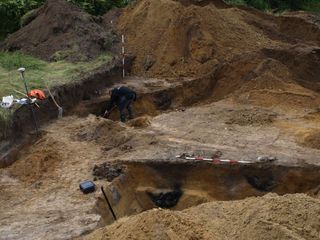
The Viking archaeological site in the town of Haarup, near Silkeborg, was discovered during the construction of a motorway in 2012.
As well as the burials in the wooden tomb, there are several ordinary Viking burials nearby that include grave goods. But so far, no Viking houses have been found, according to the researchers.
Tomb layout
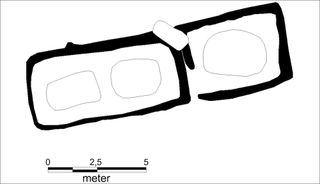
The wooden tomb at Haarup — dubbed the "dødehus" in Danish, which means "death house" — held two occupants thought to be the leading couple of the local Viking community, but they may not have been husband and wife, Nielsen said.
A third grave containing the body of a second man was added at a later time, and enclosed by a wooden extension to the walls of the original tomb.
Grave goods
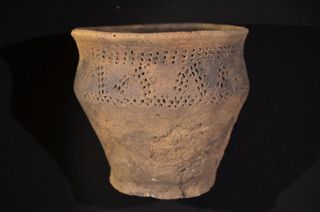
This ceramic jar was found in the grave of the woman in the tomb. The style has been identified as originating in a part of the Baltic far to the east of the central Jutland region in Denmark, where the tomb was discovered.
Nielsen said this discovery and others like it show that the Vikings in the Haarup area in the 10th century had widespread connection with distant areas through travel and trade.
Far and wide
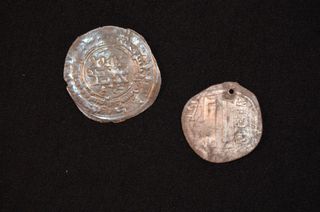
These silver coins were found in the grave of a Viking woman buried outside the tomb at the Haarup archaeological site. They have been identified as silver dirhams minted in what is now Afghanistan, many thousands of miles from the burial site in Denmark, where they were eventually interred as Viking grave goods.
Viking warriors
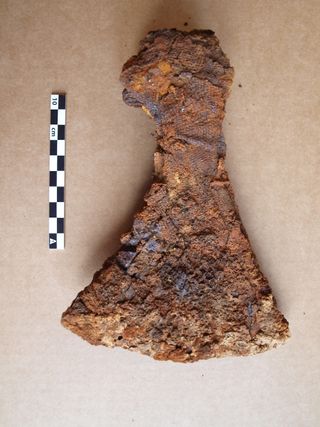
The second grave in the tomb contained a male and another large Dane ax, although not as large as the ax that was found in the first grave.
Nielsen thinks the second man may have been the son or successor of the first man buried in the tomb, and their burials with only their axes and clothes in the grave signifies their status as Viking warriors.
Sign up for the Live Science daily newsletter now
Get the world’s most fascinating discoveries delivered straight to your inbox.
Tom Metcalfe is a freelance journalist and regular Live Science contributor who is based in London in the United Kingdom. Tom writes mainly about science, space, archaeology, the Earth and the oceans. He has also written for the BBC, NBC News, National Geographic, Scientific American, Air & Space, and many others.
